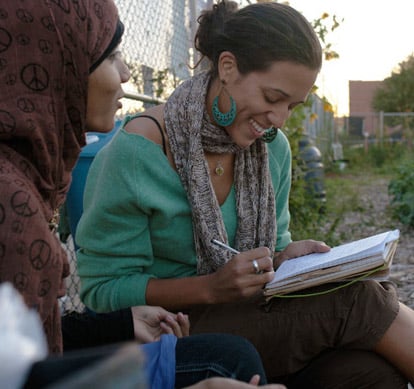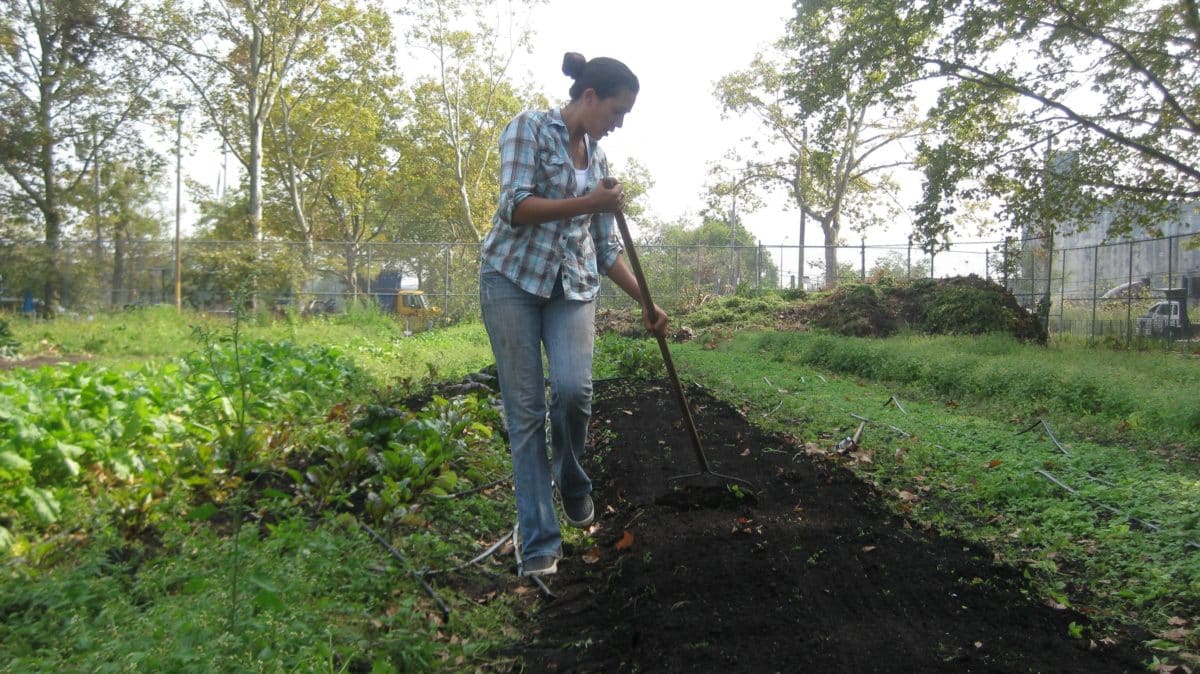Eliza Bowens-Poole, my great grandmother, was born to a sharecropper and earned her living as a cook. She grew up with her father and brothers working on a plantation farm in Greenville, South Carolina and spent her days cooking in the homes of white families. Since this history is not unique to many black women in the rural South from the era of slavery to as recently as the 1960s, I can’t say I was too surprised by her story. But, when I found her name in the records on the 1910 and later 1940 Census of Greenville and saw her family’s occupation as “tenant farmers” and her occupation as “cook at family estate” scribbled next to it, I experienced a jolt of shock.
It was simply new information about my great grandmother’s life – a woman I never really had the chance to get to know before she died. My only memories of her are so faded that they don’t even feel real anymore. They’re all smells and colors and the tug of the comb on my hair as she tackled my unruly curls, liberating the bubble gum they’d entangled. I remember the aqua-green color of her bedroom floor. I remember her tiny blue kitchen filling with the unforgettable aroma of chitlins cooking on the stove, where the colors were all green and black-eyed bean.
This was all I ever carried of LaLa, up until the moment I found out she cooked in kitchens other than her own and grew up farming land for other people. In that moment, my great grandmother came alive for me. As did the history of food in the rural Black South and the oppressive memories that can be baked into it.
My genealogical research was spurred on by my new-found occupation. I was training to become a farmer. I had left my job as a health care advocate and student organizing trainer in Washington D.C. to immerse myself in the world of food. Beyond cooking and being conscious of where my food was coming from, I was pulled to the soil for a reason unknown to me at that point. I just wanted to be a part of my food from seed to table.
I slowly reached this point by volunteering on urban farms, reading a lot and working for farmers at the farmers market. Then I found myself living on an organic farm in West Virginia for the summer, digging barefoot in the mud and loving life. Well, almost. Every time I dug my hands into the soil to sow a seed or turn up the earth, I found myself thinking of LaLa. In fact, I found myself thinking of her daughter Nana and her grandson, my father. I wondered what they’d think of my new life working in the fields under the hot sun. Working the land for other people; people more often than not, white.
As a descendant of those who were forced to work the Earth under the most oppressive conditions known to man, maybe farming wasn’t exactly the occupation I should be striving for. But was this the right frame of mind to have about agriculture today? Was it fair to define a trade that carries so much knowledge and wisdom of the land by only the pain it’s also carried for my people? I wondered if I was shamefully returning to a trade my ancestors worked to free me of or if I was reclaiming a connection to land and food that my generation has lost.
After the emancipation of slaves, my ancestors continued to work the land. As tenant farmers and sharecroppers, they continued under oppressive conditions, but, slowly, black farmers were able to start acquiring land, paying off debts and sustaining themselves with their harvest. By 1920 they were nearly one million strong and black land ownership was at about 15 million acres nationally. Considering the fact that these people were once owned as property, to now have ownership over their own property was far more meaningful than we can imagine.
Which is why the loss of land and the rapid decline in black farmers over recent decades is so painful. Black farmers are losing land at three times the rate of white farmers. Much of this is due to farm foreclosures and barriers to loans and support from the USDA, brought to light in the recent USDA v Pigford case. We’ve gone from one million strong to less than 30,000.
It’s no wonder I felt so alone out there on the farm in West Virginia. Looking around the agricultural industry and the good food movement, the monoculture was apparent. So I decided to do some digging. First, I needed to understand my own roots in agriculture which is what sent me on the genealogical search. Next, I went off in search of solidarity looking for other young black and brown farmers of my generation.
And what I found has been life changing. In 2012, I hopped into a 1990 Oldsmobile station wagon and drove across sixteen states over the course of five months to talk to over seventy-five Black, Asian, Native American and Hispanic farmers and food activists. I compiled their stories and portraits and created a photographic storytelling project and book entitled The Color of Food: Stories of Race, Resilience and Farming.

Natasha Bowens Courtesy photo
Though our numbers struggle to keep up with the dominant 96% of white farmers that comprise the United States Agricultural Census today, farmers of color are here and we’re growing a lot more than food. I met mothers in New York City who began farming to change the health of their communities – communities that face health problems like diabetes, heart disease and obesity at highly disproportionate rates. I met great-grandsons in the rural South whose grandfathers were some of the first black farmers to start cooperatives and they are returning to the land to revive the farming cooperative concept in their communities. I met young seed-savers in Appalachia and revolutionary farm educators in the Northwest. I met retired land-owners passing their greatest asset down to family and farm owners who’d left the toxic life of migrant labor behind despite the odds.
The farmers I interviewed are only the tip of the iceberg and all of their stories carry unique histories, struggles, successes, cultural foodways and influences – but they give me hope and a renewed sense of pride in farming. I stayed with many of the farmers, sometimes on land that had been in their family for generations. I knelt in the soil working side by side with some farmers while we talked about how their families had been farming organically before the word “organic” was used. I shared meals with them: recipes passed down through their families, sometimes tracing back to homelands far from here. We talked about how their work is a preservation of those recipes, those ingredients and their own heritage. These farmers recognize the painful history tied to agriculture for people of color, but more so they see the opportunity for preserving culture and sustaining community. That’s what agriculture should be about. It’s about so much more than food.
And the story of food for people of color is about so much more than the fact that we may have grown, harvested or cooked it for the rest of society for hundreds of years under oppressive conditions. Just as my great grandmother was not defined by her job cooking for white families in the rural South. Her legacy was richer than that.
It’s about how she fed and supported her own family despite what she faced. It’s about how she passed on a connection with food and the land that came calling to bring me back. It’s about how we can build community around food. It’s about what we can create from the land and what we can give back to it as its stewards.

Today as I dig my hands into the soil, with all its smells and colors and the tug of the sun’s heat on my hair, I still think about my great grandmother, and I know she would be proud. ![]()
